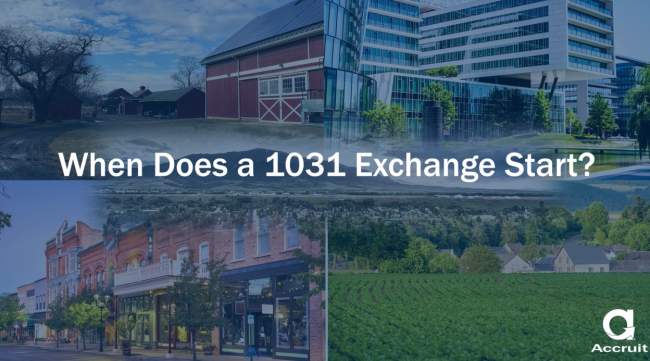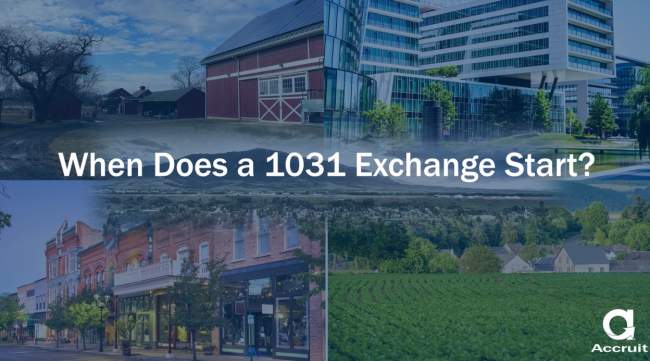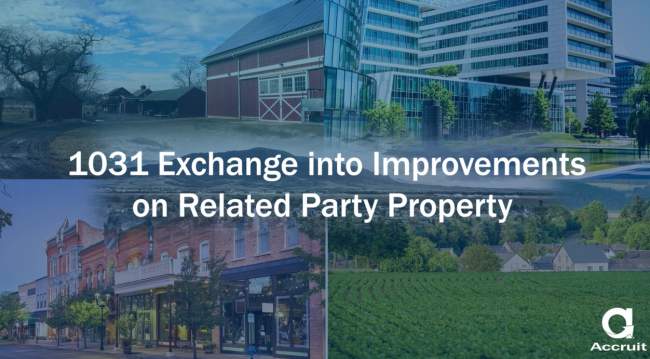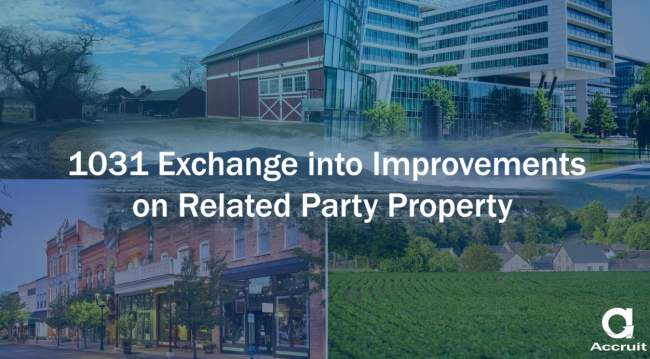With buildings responsible for over 1/3 of global CO2 emissions, the shift toward sustainable real estate is growing. Government incentives, stricter regulations, and rising demand make green properties a smart investment. 1031 Exchanges offer investors a tax-efficient way to transition into eco-friendly properties or fund sustainability upgrades, aligning financial growth with green practices. In this blog, we explore key sustainability trends, investment opportunities, and how 1031 Exchanges can support the transition to green real estate.
The Rise of Sustainable Buildings
Cities and companies around the world are setting strong carbon neutrality goals, driving innovation in sustainable building practices. The World Green Building Council estimates that green buildings can cut carbon emissions by up to 50% compared to traditional structures, and hundreds of cities globally have committed to achieving carbon neutrality by 2050. Additionally, green building certifications like LEED (Leadership in Energy and Environmental Design) and BREEAM (Building Research Establishment Environmental Assessment Method) are becoming more important to new construction projects, as organizations place greater emphasis on sustainable decisions.
Investment Potential
Sustainable properties not only contribute positively to the environment, but also present significant investment opportunities. Opportunities include:
Market Stability: Green buildings tend to be more resilient to market fluctuations, due to their lower operational costs and long-term value, offering a more stable income stream.
Higher ROI: Sustainable properties often command higher property values and premium rental rates, leading to a higher return on investment.
Institutional Support: Environmentally conscious investors, including many https://www.accruit.com/blog/passive-real-estate-investments-reits-and-… Estate Investment Trusts (REITs) are increasingly drawn to green real estate, recognizing its potential for long-term growth.
Government Regulations and Incentives
In the United States, federal, state, and local governments actively promote sustainable real estate through various policies, regulations, and financial incentives designed to encourage green development.
Key Policies
Stricter Building Codes: Regulations now require higher energy efficiency, water conservation, and use of sustainable materials in construction. For example, the International Green Construction Code (IgCC) provides a comprehensive approach to building design, construction, and operation, establishing mandatory green standards for buildings.
Carbon Emission Regulations and Incentives: Policies are being introduced that penalize high carbon emissions, encouraging businesses and builders to adopt greener practices. The Inflation Reduction Act (IRA) supports these efforts by offering tax credits and rebates to incentivize energy-efficient and renewable energy improvements.
Green Certification Programs: Certifications like LEED provide incentives for meeting sustainability standards, promoting green construction. These certifications provide clear guidelines for sustainable building practices.
Incentives for Builders and Buyers
Tax Credits: Builders and property owners can benefit from tax credits for investing in energy-efficient systems and materials. For example, the 45L Tax Credit offers up to $5,000 per unit for energy-efficient homes, promoting sustainable housing while lowering energy costs for both owners and tenants.
Subsidies: Government subsidies are available to support the installation of renewable energy systems and retrofitting of existing buildings. The IRA allocates funds to clean energy production, including support for renewable energy installations.
Financing: Green construction projects can benefit from financing options, making it easier to invest in sustainable building practices. Various programs are available to assist with energy-efficient purchases and improvements, such as green loans. Green loans are a dedicated type of financing designed for eco-friendly projects, such as solar loans, energy-efficiency loans, and green mortgages. They often require proof that the funds were used for sustainable projects and may offer lower interest rates to encourage sustainable practices.
These policies and incentives are designed to reduce the cost of adopting sustainable real estate, encouraging wider participation and fostering continued growth in the sector.
Green Housing
“Green housing” refers to homes built with energy-efficient resources and environmentally sustainable practices. The goal is to create homes that are not only environmentally responsible but also cost-effective, offering long-term financial benefits to homeowners.
Key Benefits of Green Housing
Preserving the Environment: Green housing minimizes carbon footprints, conserves energy, and uses recyclable materials while reducing costs for homeowners.
Sustainable Upgrades: Upgrades such as solar panels, energy-efficient appliances, and recycled materials make green homes both eco-friendly and more cost-effective for the tenants. In California, sustainability is further prioritized through the state’s solar mandate, which requires all new homes and low-rise multifamily properties to have solar panels installed during construction, ensuring that renewable energy is integrated from the start.
Green Real Estate and 1031 Exchanges
Green real estate represents a shift in how properties are designed, renovated, and managed. As eco-friendly materials and energy-efficient technologies like solar panels and wind energy become more widely adopted, green properties are becoming highly desirable investments.
While tax incentives, such as the 30% federal tax credit for installing solar panels, don’t directly impact 1031 Exchanges, they can play a role in influencing investor decisions. Investors seeking to maximize returns on green properties can benefit from these incentives, as they help offset the costs of installing energy-efficient systems, making the property more financially viable. In some cases, tax credits and rebates can even improve ROI by reducing the upfront costs of making green upgrades and yielding higher rents from tenants.
For example, consider a residential property worth $270,000 generating $2,250/month in rent. Operating costs, such as maintenance and insurance, amount to 3.08% of the gross rental income. After accounting for these expenses, the property has an expected Net Operating Income (NOI) of 5.25%. Operating costs, such as maintenance and insurance, consume 3.08% of that income. If the investor decides to install solar panels at an estimated cost of $15,000, the total investment increases to $285,000. While rental rates might not immediately increase as a result of the solar installation, the 30% tax credit could offset up to $4,500 of the expense, significantly reducing the effective cost of the upgrade. Studies show that LEED-certified multifamily properties command a 9% rental premium, double that of non-certified properties. In the office sector, LEED-certified office buildings achieve an average rent 31% higher than non-certified buildings. For class A, green-certified office properties, there is an average 7.1% rental premium. Studies conducted across 20 major global office markets found that only 34% of the future demand for low-carbon workspace will be met in the coming years. In other words, for every 9 square feet of demand, only 3 square feet is currently in the pipeline. Over time, the combination of energy savings and increasing demand for sustainable properties could further enhance a property’s profitability.
Using 1031 Exchanges for Green Investments
A 1031 Exchange is a powerful tax-deferral strategy that allows real estate investors to reinvest proceeds from the sale of one property into another like-kind property, deferring associated taxes in the process. For investors focused on sustainability, this creates an opportunity to transition into green real estate without the immediate tax burden, while simultaneously benefiting from long-term energy savings and enhanced property value.
An https://www.accruit.com/blog/1031-exchanges-involving-construction-and-… exchange can also be valuable strategy, allowing investors to use a portion of their reinvestment funds to upgrade the Replacement Property(ies). If properly structured, sustainability improvements such as solar panel installations or water-saving fixtures can be included as part of the Replacement Property value. This means investors can reinvest in green real estate while still deferring taxes, effectively combining the benefits of both tax deferral and sustainable property improvements. Additionally, Exchangers installing solar panels as part of a 1031 Exchange can still take advantage of the 30% tax incentive, as this incentive is separate from the exchange and allows the Exchanger to deduct 30% of the cost from their Adjust Gross Income, regardless of the source of the funds.
By leveraging a 1031 Exchange for sustainability upgrades, investors not only maximize tax benefits, but enhance the long-term value and efficiency of their properties.
The future of real estate is going green. Sustainable building practices, government incentives, and growing investor interest are shaping the industry. While tax incentives for environmentally friendly building upgrades don’t directly affect 1031 Exchanges, they make green investments more attractive by reducing upfront costs. Investors seeking strong returns and sustainability should consider green properties, whether through upgrades, improvement exchanges, or utilizing incentives, ensuring both financial growth and positive environmental impact.
The material in this blog is presented for informational purposes only. The information presented is not investment, legal, tax or compliance advice. Accruit performs the duties of a Qualified Intermediary, and as such does not offer or sell investments or provide investment, legal, or tax advice.
Sources:
Green Real Estate: The Key Sustainability Trends for 2025 | GEP Blog
Sustainability reporting in construction and real estate sector: A conceptualization and a review of existing literature – ScienceDirect
Why Bother with Certification? LEED-Certified Apartments Earn Higher Rents :: GBIG Insight
Green Loans and Eco-Friendly Lending | Axelrad Capital









